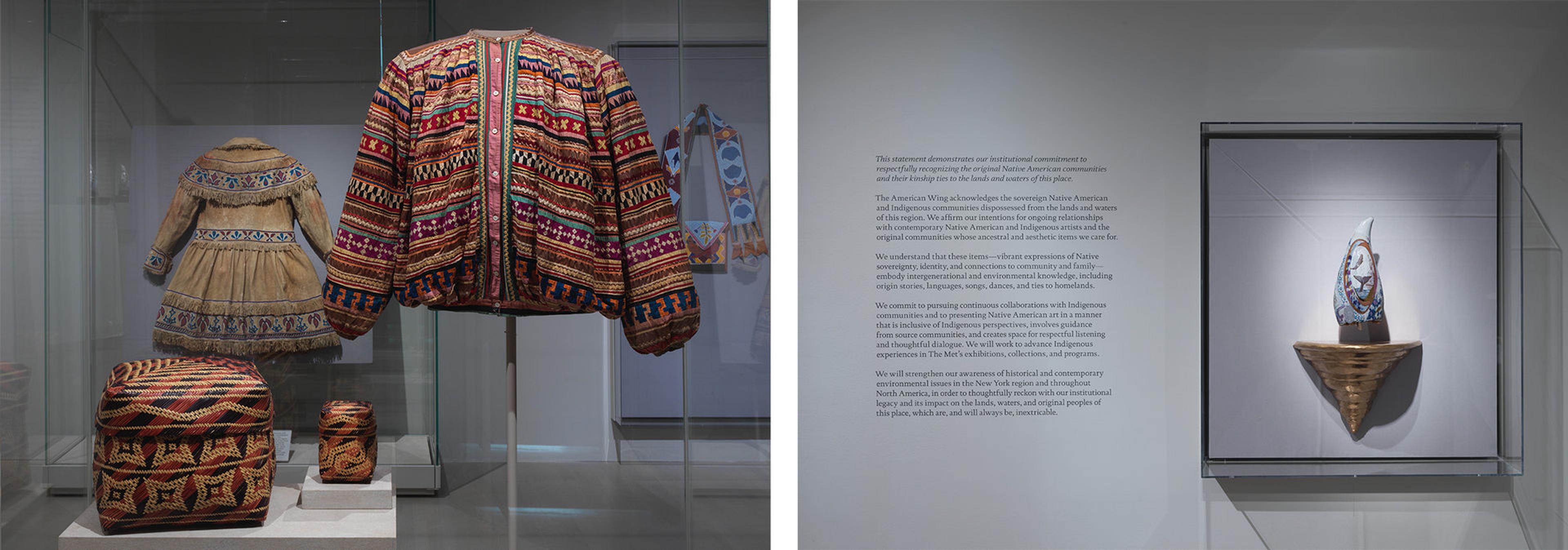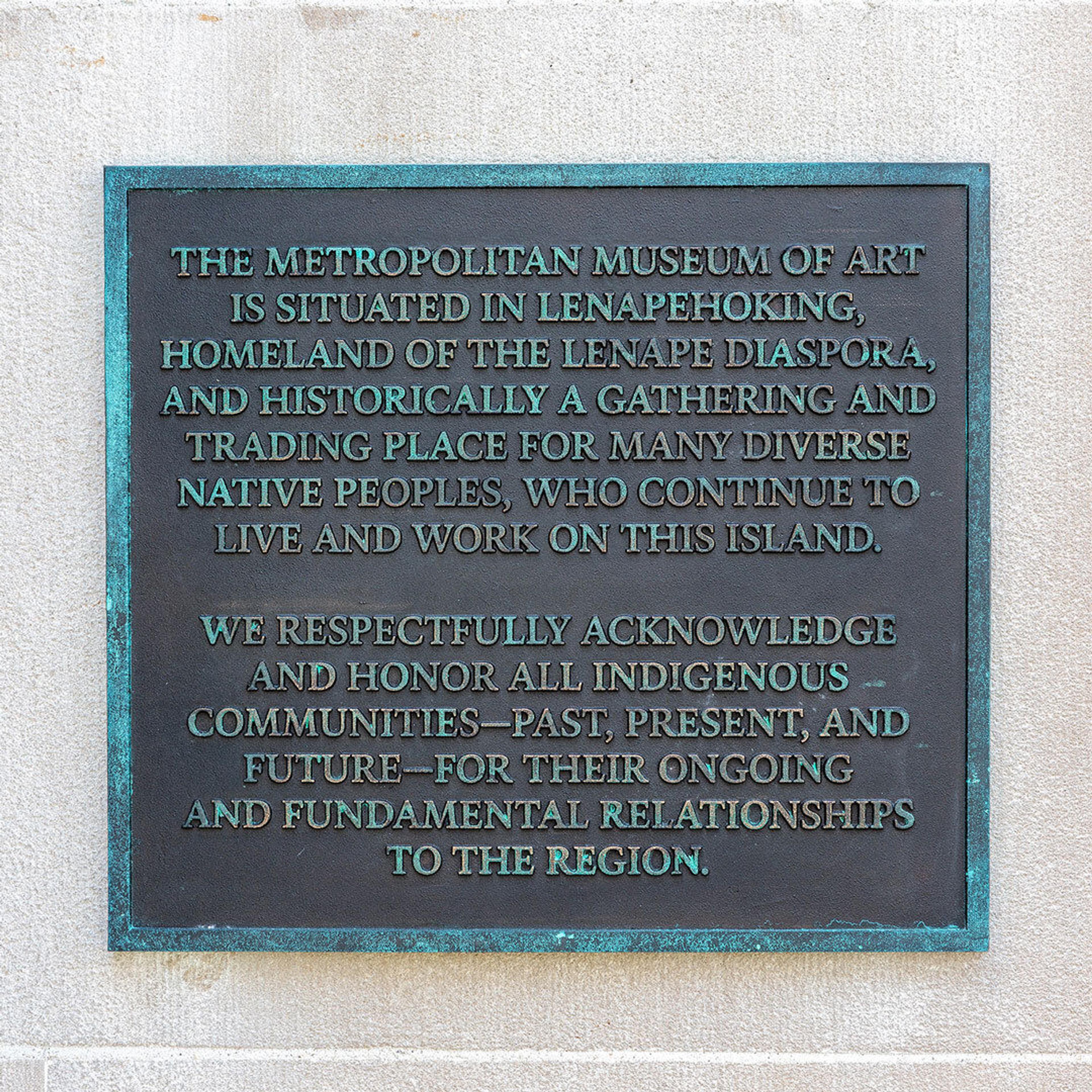On May 11, 2021, a bronze plaque recognizing Lenapehoking, homeland of the Indigenous Lenape diaspora, was installed on the The Met Fifth Avenue’s facade. Reflecting years of extensive consultation and development with Native community members and specialists, as well as non-Native scholars, the acknowledgment reads:
The Metropolitan Museum of Art is situated in Lenapehoking, homeland of the Lenape diaspora, and historically a gathering and trading place for many diverse Native peoples, who continue to live and work on this island.
We respectfully acknowledge and honor all Indigenous communities—past, present, and future—for their ongoing and fundamental relationships to the region.
Land or territorial acknowledgments are common in Canada, but it’s only recently that US museums have begun to place them at their entrances. Such statements are integral to the goals of building and maintaining respectful relationships with Indigenous communities whose original lands museums now occupy. They also indicate that an institution is committed to appropriately honoring the communities whose ancestral and aesthetic items are now in their care.
Museums with major Native arts holdings have typically displayed land acknowledgments near Indigenous collections—a practice we followed in the American Wing. In 2018, The Met included an acknowledgment in relation to our long-term installation Art of Native America: The Charles and Valerie Diker Collection. Marking the first time that historical Native North American art had been featured in the department of primarily Euro-American art, this short statement was complemented by greetings in both Unami and Munsee Lenape languages provided by New York’s Lenape Center, an organization that has done much to promote such long-overdue recognition.

Left: Installation view of the Woodlands section of Art of Native America, 2021. In the background are a Lenni Lenape (Delaware) artist man’s coat (ca. 1840) and a bandolier bag by Joe Baker (Delaware Tribe of Indians, b. 1946). Right: New land and water statement featuring the work of Courtney Leonard (Shinnecock), Art of Native America, 2021.
By featuring a statement more prominently on the exterior of The Met’s main building—below a bronze plaque paying tribute to the City of New York—the Museum is intentionally recognizing Indigenous peoples and their inextricable ties to their homelands in this region. As a cultural institution whose civic mission focuses on cross-cultural and interdisciplinary education for the public good, The Met has a responsibility to share truthful narratives of our past and present. It’s not enough to simply install a plaque on a building, however. Even more meaningful is the Museum’s commitment to pursue substantive collaborations with diverse Indigenous communities, to actively embody our respectful acknowledgment, and to effect social change beyond our doors. It’s critical for The Met to reckon thoughtfully with our institutional legacy and its ongoing impact on local lands and waters, as well as the lives of the original communities, to evolve into the cultural institution that we aspire and need to be for the region, the nation, and the world.
To that end, the American Wing has installed a new kind of statement that affirms relationships with contemporary Indigenous American artists and communities, both complementing and extending the purpose and profile of the acknowledgment etched in bronze on the Museum’s Fifth Avenue facade. This statement accompanies the first major rotation of Art of Native America, now overseen by The Met’s inaugural curator of Native American art, Patricia Marroquin Norby (Purépecha), and is installed at the entrance to the changing display.
As a more active vision statement, or manifesto, it demonstrates our commitment to recognizing Indigenous communities as the original peoples of this land and respecting their sustaining ties to this place. Moreover, by presenting Native American art in a manner that’s inclusive of Indigenous perspectives, we are underscoring historical and contemporary environmental issues throughout the New York region and North America.
The Met is also exploring a site-specific acknowledgment for The Met Cloisters, located in Fort Tryon Park near the most extensive surviving evidence of Indigenous habitation on the island of Manhattan: the Lenape trails and the caves just below Spuyten Duyvil. We look forward to these developments as we continue to advance our Native American programming and community engagement in the months and years ahead.
